Eyes of the Hammer (The Green Beret Series) Read online
Page 11
Before going out of the building, she stopped in the lone bathroom on the first floor. Someone had hung a cardboard sign on the door. She flipped it over to occupied and went in. The first sight that greeted her was a centerfold from some men's magazine hanging on the wall. Her immediate reaction was to tear it down, or go back and tell Riley to have them take it down. Then she reconsidered. That would be just what they wanted. There were better ways to handle things.
CHAPTER FOURTEEN
WEDNESDAY, 28 AUGUST
FORT BELVOIR, VIRGINIA
8:30 A.M.
"Attention!"
Riley popped to his feet as Powers's voice boomed through the isolation area. Riley stood in front of a folding metal chair, with the other members of Eyes One stretched off to his left along the cinder block wall that made up one side of the room. Across from Riley, the windows facing the parking lot were covered with butcher block paper to prevent anyone from seeing in. Seated in front of the windows, facing him, were the members of Eyes Two.
Separating and perpendicular to the two teams, a dozen chairs were set up. It was to these chairs that General Pike was leading the two people to whom the upcoming briefing was to be given. The "briefback" was a tenet of Special Forces operations that was unique in the army. Most army units issued operations orders for missions and even briefed the plan, but few took the time, or had the expertise at such a low unit level, to prepare a briefback comparable to what Special Forces A-Teams put together.
Riley studied the newcomers out of the corners of his eyes as he stood at a rigid position of attention. The chairman of the Joint Chiefs of Staff, General Macksey, led the way and took the center chair facing the front of the room, where the maps for both missions were displayed, tacked onto pieces of plywood. Flanking the chairman, on his left, was a three-star air force general. Westland was seated in the center of the second row right behind General Macksey.
Riley was surprised that there were only three people present for the briefback. He had expected a hoard of aides and self-appointed important people. The small number was another fact, added to the events of the last several days, to convince him that somebody was very serious about security for this mission.
Pike went to the wood podium set up in front of the maps. He waited while Macksey ran his eyes over both teams, still standing. Finally, General Macksey introduced his companion. "Gentlemen, this is General Linders. He's the man on my staff who is responsible for Special Operations."
Macksey took his seat and growled at the team members, "Take your seats, gentlemen." He turned to Pike. "Let's get this show on the road."
Pike nodded. "Sir, you'll be receiving an operational briefback from both teams, Eyes One and Eyes Two. Mister Riley is the commander of Eyes One and he'll start."
Riley walked to the front of the room. He had been nervous before the briefing, knowing that the people he was addressing were, as Powers put it, echelons above God from an army perspective. But now that he was about to start, his nervousness abated and he felt confident. They had a good plan and, more importantly, each member of the team had committed the plan to memory. It was just a question of letting Macksey and Linders know that.
"Good morning, General Macksey, General Linders." Riley nodded to the two officers. "I'm Chief Warrant Officer Riley, commander of Eyes One. This briefing is classified top secret. Eyes One's mission is to infiltrate operational area Harkon, located here in the vicinity of Cartagena, Colombia, at 0230 Zulu time, 29 August, and destroy target Nail One, at 0930 Zulu. The purpose of this mission is to verify and designate for destruction a suspected cocaine laboratory located there. We will be exfiltrated at 1038 Zulu time, 29 August."
Riley halted at Macksey's raised finger. "Yes, sir."
"The time zone down there is the same as here, isn't it?"
"Yes, sir. Sierra time zone."
"So we're talking minus five hours from Zulu to convert to local."
"Yes, sir."
"So you're talking in at 2130 and out by 0538 local. All in darkness. Good. All right, continue."
Riley gestured toward his split team. "Sir, I'd like to introduce the members of Eyes One and give you a brief operational overview. I'll then be followed by the members of the team, each briefing their own specialized areas.
"Master Sergeant Powers is the team sergeant." Powers rose to attention as he was introduced, as did each succeeding team member. Riley watched the general inspect each man as his name was called.
Riley then stepped out from behind the podium and began his description of the operation. He spoke from memory, without referring to notes, and used a pointer in conjunction with the map to highlight a location or route he described. "The concept of the operation for this mission is as follows: Eyes One will depart Fort Belvoir army airfield tomorrow at 1900 Zulu. The flight..."
Riley paused as the air force general, Linders, whispered something to Macksey, who nodded and addressed Riley. "I appreciate your using Zulu time, since that's the proper way to do it, but since everything is in the same time zone, for the purposes of this briefing, let's keep it local. All right, Mister Riley?"
"Yes, sir." Zulu time was used because Special Forces operations usually cut across several time zones, and to prevent confusion and aid coordination, all parties worked off of Greenwich mean time, commonly referred to as Zulu time. But if the general wanted local, the general got local.
"We depart the airfield here at 1400 local. The flight will take approximately seven and a half hours to reach the infiltration point. There will be one in-flight refuel of our C-130 aircraft by a KC-10 tanker en route.
"Our high-altitude release point, or HARP, is here, approximately fifteen kilometers from our primary drop zone, DZ Hatter, which is here. The release point may have to be adjusted depending on weather, most particularly winds aloft. We will coordinate that with the crew before takeoff and en route.
"To get from the high-altitude release point to the drop zone, we will use a technique called HAHO, or high altitude, high opening. Basically, we will fly our free-fall parachutes like hang gliders from our opening at thirty thousand feet to the drop zone. This allows the infiltration aircraft to stay offset from the target over water and should allow us to infiltrate undetected."
Macksey raised another finger and Riley paused. "Won't the six of you get picked up on radar while floating in?"
"No, sir. Our nylon canopies don't reflect radar, and the signature from our bodies will be minimal. Currently, there is only normal air traffic control radar in use in the vicinity of Cartagena. We've jumped into ATC-controlled airspace before and have never been picked up."
Macksey gestured for Riley to continue. Riley slapped his pointer on the map behind him. "Once we land on DZ Hatter we will move to the target and place observation on it to confirm whether or not it is a legitimate target. We will contact the AWACS plane, code-named Moonbeam, that will be orbiting over the Gulf of Mexico. The AWACS will forward our assessment to both the AC-130 Spectre gunship, designated Hammer, that will be en route, and back here to our base of operations at Fort Belvoir, designated Hammer Base.
"If the target's legitimate, Hammer will be on station at 0415. We will highlight the target with laser designators at 0425. At 0430 Hammer will fire. We will then make an on-the-scene assessment of target destruction.
"We will be exfiltrated from this field here—a little over a kilometer from the target—at 0538 by an MH-60 Blackhawk helicopter, designated Stork. Coordination and communication with these aircraft will be done through the AWACS." Riley looked Macksey in the eye. "I'll be followed by Staff Sergeant Marzan, who will cover the terrain, weather, and enemy situation."
Marzan stood up and strode briskly to the map, relieving Riley of the pointer on his way there. This was Marzan's first time briefing the intelligence portion for a mission and Riley silently wished him luck.
"Good morning, sir. The area we will be operating in is bounded by the Gulf of Mexico to the northwest and these m
ountains to the southeast. Key terrain features in the area include the Caribbean Sea and coastline, the city of Cartagena 14 kilometers to the north of the target, the coastal highway, and, as we close in on the target, this dirt airstrip approximately 1.4 kilometers long that borders the lab site.
"The terrain is mostly swamp, plantation land, or tropical forest. Between the drop zone and the target we will cross what appears to be uninhabited swampland and forest. Since it is the end of the rainy season there, we expect to find the water level at normal or slightly above normal levels.
"Population density throughout the area outside of Cartagena is moderate—approximately one to ten people per square kilometer is the average. The terrain in the immediate vicinity of the target is mostly flat and heavily vegetated. The forest consists mainly of tropical trees with some deciduous. Observation and fields of fire are limited due to the thick vegetation. Concealment is excellent for the same reasons.
"The target itself is partially hidden under the trees. The satellite imagery shows a short airstrip bounding the target on the west side. We have also made out a dirt road leading from the target toward Cartagena and the coast. In the target itself we can see the outlines of three, possibly four, buildings and some metal drums.
"Avenues of approach are basically whatever compass direction we desire to shoot through the swamp. The enemy can also move throughout the area in the same manner and enjoys the advantage of knowing the terrain. There appear to be several small dirt roads in the area and these may be used by the enemy to move by motorized means.
"Possible helicopter pickup zones in the area include the one we are using for exfiltration and our alternate, farther away on the other side of the highway from the target. If necessary, we could use the airstrip next to the lab itself. Other than those, LZs are limited. The beach farther to the west might be a possibility.
"In the area of operations, the weather is expected to be normal for this time of year. Highs during the day are projected to be around ninety-five degrees Fahrenheit, while the lows at night will be in the high seventies. Even though this is the end of the rainy season, the present projected forecast calls for no precipitation. Winds are normally from the north-northwest. Forecast for our infiltration indicates good jumping weather. Winds are expected to be from the north at twenty knots and visibility approximately twelve miles at jump altitude."
Riley looked to his left at Powers and nodded. Marzan was doing a great job.
"Light data is posted here. Of highlight you can see that we will average 10.3 hours of darkness each twenty-four hours. There will be 40 percent illumination on the night of the mission.
"The effect of the weather on either friendly or enemy forces will be minimal. The illumination will aid in our use of night-vision devices and will aid in navigation for our exfiltration aircraft. It is not known whether the enemy has night-vision devices. We are assuming they might have passive devices but it is highly doubtful they have thermal imaging."
If the bad guys have thermal imaging, Riley thought, we might as well kiss our asses good-bye. A thermal imager did away with the concealment offered by both the night and the vegetation by providing a picture of the heat sources in the area. A man's body showed up quite clearly. There were no indications in all their intelligence reports that the drug cartel had yet purchased and utilized the highly expensive and difficult-to-maintain devices.
"The disposition of enemy forces in the immediate area of the target is unknown, but we estimate at least fifteen guards on site. We presume they are armed with automatic weapons with the likely possibility of some crew-served machine guns.
"Colombian military in the area includes elements of the 2d Brigade headquartered in Barranquilla. The closest elements are stationed approximately twenty-three kilometers from our target on the north side of Cartagena. This is an infantry unit, approximately battalion sized, armed with automatic and crew-served weapons. The basic personal weapon of the Colombian Army is the German G-3 automatic rifle. Units also possess their own organic mortars, which we believe are U.S.-manufactured 81 millimeter. State of training and discipline of the army is considered high due to constant operations against the guerrillas.
"There is a rotary wing aviation unit of approximately company size stationed at the Cartagena airport. This unit has four UH-1 lift helicopters and two UH-ls modified with 7.62-millimeter miniguns. We estimate reaction time of this force to range anywhere from thirty minutes to several hours if it is alerted at all. The state of readiness of this unit is expected to be low, as is their maintenance posture. It is estimated that at least half those helicopters are down for repairs. Additionally, the Colombian rotary wing pilots have yet to demonstrate any proficiency at night combat flight operations. They do not conduct flight operations with night-vision goggles.
"The nearest Colombian air force elements are stationed in Cartagena at the airport. Last satellite imagery shows two Mirage jets and one C-126 turboprop transport on the tarmac there. The ability to scramble those jets is unknown."
General Linders interrupted. "Don't worry about any interference from the air. Every night you guys run a mission I'll have air support standing by. If the AWACS spots anything lifting off that could be a threat to you or the aircraft supporting you, we'll take care of it."
Riley was impressed. Somehow, the whole mission had seemed like just a training mission up until now. But the thought of all the support that was being lined up for this mission, and the presence of the chairman of the Joint Chiefs of Staff and an air force three star, made it all seem real. Riley also wondered how the U.S. would explain the interdiction of those Colombian air force jets to the Colombians on the off chance the U.S. air force did have to intervene.
Marzan consulted his notes again. "Overall, we feel that the greatest enemy threats we face are detection during infiltration and exfiltration, discovery by guards during our surveillance of the target, discovery by local population during infiltration and surveillance, and conflict with regular Colombian military forces that might react to the raid."
Macksey raised his finger again. "How long do you plan to be on the ground following your strike, again?"
Marzan answered from memory. "Strike will occur at 0430 and our exfil will be at 0538."
Macksey considered that. "What do you think the chances are of the Colombian forces getting to the target area in that time frame?"
Marzan paused for a second as he thought out his answer. It had been a question the team had spent a lot of time on. "Sir, I think the chances of that are slim. First, they have to know something happened. Our target is pretty isolated, and if we destroy all personnel on the site, that eliminates a possible source of alert.
"Second, even if someone escapes it is unlikely that they will alert the military. There is the possibility some civilian might report the firing, but in Colombia the people have learned to keep their mouths shut about violent acts."
Macksey was satisfied. "All right. If you need to move up that exfil go ahead and do it, but I accept your reasoning for your present time schedule."
Marzan nodded. "Sir, that completes the intelligence portion. I have here our escape and evasion plan, which has been sealed and should be opened only in case of failure of this detachment to make contact with the AWACS or upon receipt of our escape and evasion code word."
Marzan walked over and handed it to General Pike. It was traditional that the escape and evasion (E & E) plan went to the commander taking the briefback, who personally kept it secure until such time as it might be needed. In this case, they gave it to Pike, because he would be the man responsible for the plan's implementation.
The E & E plan was the team's last hope to exfiltrate in case of the failure of exfiltration on the primary or alternate landing zones, and as much time was put into making that plan as the actual operational plan to hit the target. The entire team had been briefed on the plan and had memorized its contents.
Riley watched as Powers rumbled his wa
y up to the front of the room and centered the tip of the pointer on Virginia on the large-scale map.
"Sir, for infiltration we will depart Fort Belvoir army airfield tomorrow at 1400. We will follow this flight route." Powers traced a route traversing the southeastern United States, looping across the Gulf of Mexico to the west of Cuba, and then skimming the coast of Colombia.
"We will fly approximately ten kilometers off the coast of Colombia. The flight route has already been posted as a training mission with air traffic control in Cartagena. Since the aircraft never crosses over Colombian land, we feel it should not raise any suspicions during the brief slowdown the aircraft will have to do for our jump."
Powers paused as General Linders turned to the chairman. "I've had a 130 out of Panama fly that route the last two nights in order to get them used to it. There's been no problem with either one or any indication that the Colombians are suspicious. The AWACS will do enough scrambling of local radar to allow the gunship to remain over the target long enough to do the hit." Macksey acknowledged the information and turned his attention back to Powers.
"Our high-altitude release point is presently pinpointed at this location, fifteen kilometers from our drop zone at an azimuth of 290 degrees. Five minutes from the infil point I will begin giving the jump commands.
"At 2130 we will reach the release point. The team will exit the aircraft in the order depicted here. As jumpmaster, I will lead the jump and Mister Riley will bring up the rear. We will be jumping off the ramp at thirty thousand feet.
"We will assemble in the air, stacked with a hundred-meter vertical interval. I will be the primary navigator, with Sergeant Marzan and Chief Riley backing me up. The azimuth to the DZ will be 110 degrees from the infiltration point and I have several significant terrain features I will be able to see as we descend and get over land that will guide me into the DZ."

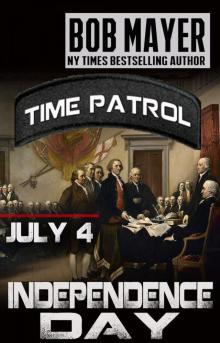 Independence Day
Independence Day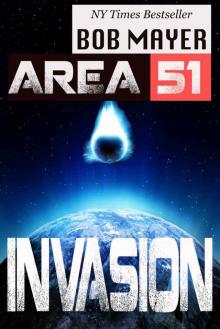 Invasion
Invasion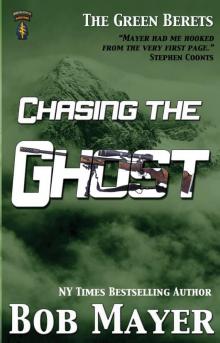 Chasing the Ghost
Chasing the Ghost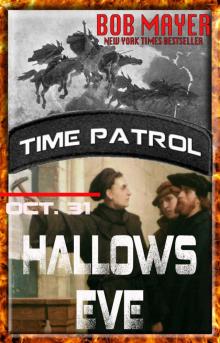 Hallows Eve
Hallows Eve New York Minute
New York Minute Valentines Day
Valentines Day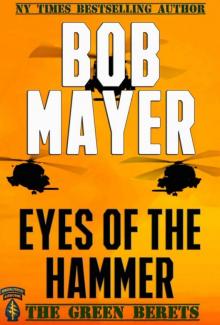 Eyes of the Hammer
Eyes of the Hammer Walk on the Wild Side
Walk on the Wild Side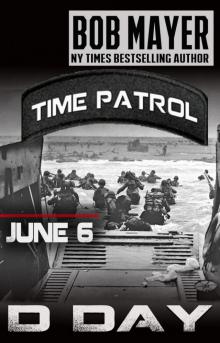 D-Day
D-Day Lawyers, Guns and Money
Lawyers, Guns and Money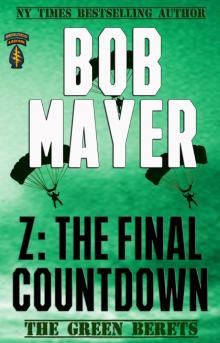 Z: The Final Countdown
Z: The Final Countdown Redemption: Area 51, #10
Redemption: Area 51, #10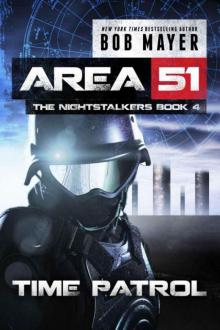 Time Patrol
Time Patrol Interstellar
Interstellar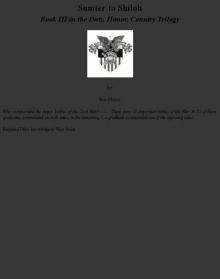 Sumter to Shiloh
Sumter to Shiloh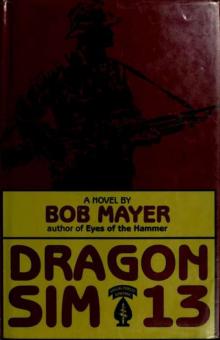 Dragon Sim-13
Dragon Sim-13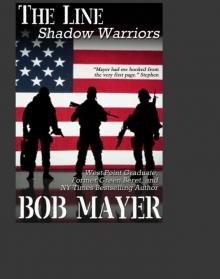 The Line
The Line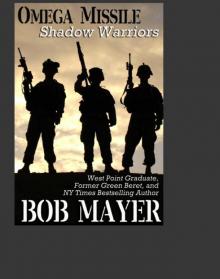 Omega Missile (Shadow Warriors)
Omega Missile (Shadow Warriors)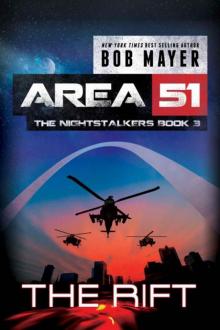 The Rift
The Rift The Jefferson Allegiance
The Jefferson Allegiance Project Aura
Project Aura Synbat
Synbat Ides of March (Time Patrol)
Ides of March (Time Patrol)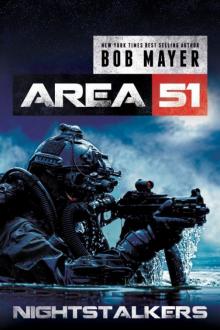 Nightstalkers a5-10
Nightstalkers a5-10 Lost Girls tc-2
Lost Girls tc-2 West Point to Mexico
West Point to Mexico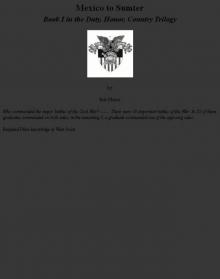 Mexico to Sumter
Mexico to Sumter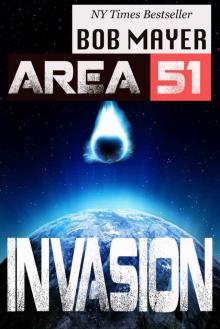 Area 51_Invasion
Area 51_Invasion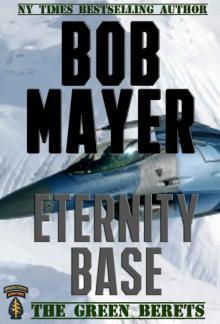 Eternity Base
Eternity Base The Line bo-2
The Line bo-2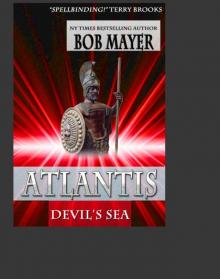 Atlantis Gate
Atlantis Gate I, Judas
I, Judas Area 51_Redemption
Area 51_Redemption Bodyguard of Lies
Bodyguard of Lies Cut Out
Cut Out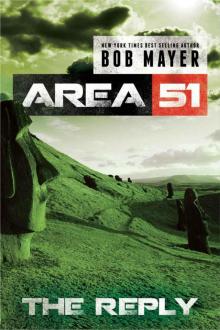 The Reply (Area 51 Series Book 2)
The Reply (Area 51 Series Book 2)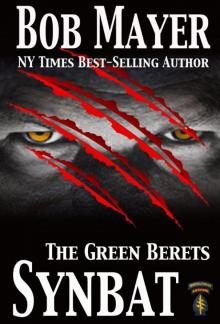 Synbat tgb-3
Synbat tgb-3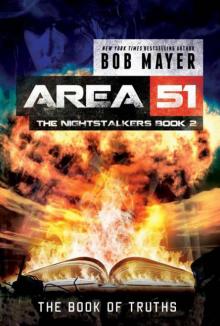 The Book of Truths a5tn-2
The Book of Truths a5tn-2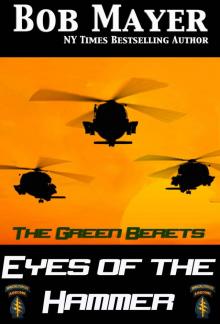 Eyes of the Hammer (The Green Beret Series)
Eyes of the Hammer (The Green Beret Series) The Gate
The Gate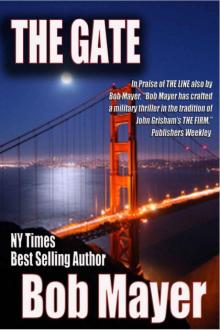 The Gate bo-1
The Gate bo-1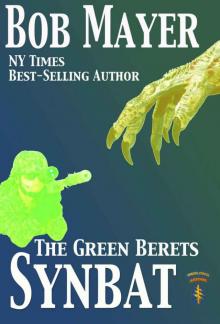 Synbat v5
Synbat v5 Omega Sanction
Omega Sanction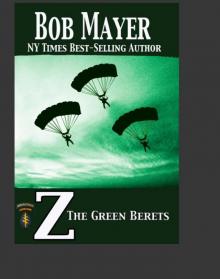 Z
Z Chasing the Son
Chasing the Son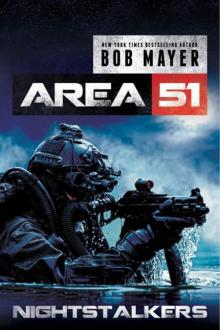 Nightstalkers
Nightstalkers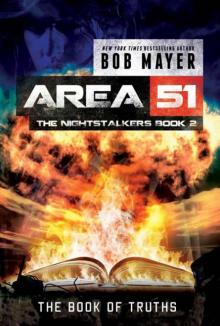 The Book of Truths
The Book of Truths Dragon Sim-13 tgb-2
Dragon Sim-13 tgb-2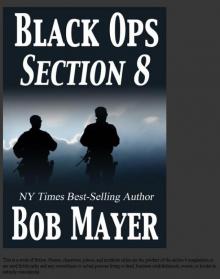 Section 8
Section 8 Chasing the Ghost v5
Chasing the Ghost v5 Psychic Warrior
Psychic Warrior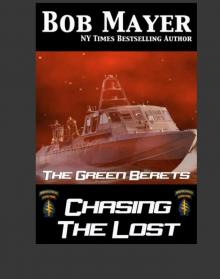 Chasing the Lost
Chasing the Lost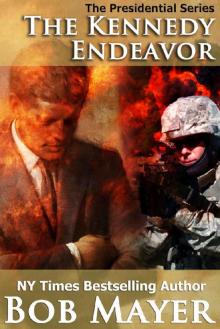 The Kennedy Endeavor (Presidential Series Book 2)
The Kennedy Endeavor (Presidential Series Book 2)